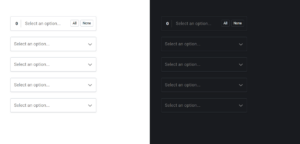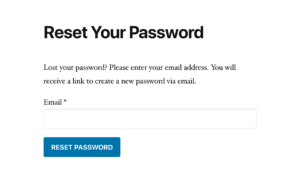Enterprise testing tools do more than manage test cases or automate tasks; they also facilitate collaboration and streamline workflows. They create a shared space where developers, testers, product managers, and operations teams can align on goals and track progress together. By providing every team with access to the same data and workflows, these tools minimize miscommunication and enable groups to work towards the same outcome.
Clear visibility across teams allows issues to surface earlier in the process. Instead of waiting for handoffs, each group can contribute insights at the right stage. This approach not only saves time but also improves the quality of the final product.
As organizations grow, the need for seamless collaboration becomes increasingly important. Enterprise testing tools support this by connecting different roles, streamlining processes, and facilitating easier progress measurement as a team. This sets the stage for improved communication, informed decisions, and expedited delivery.
How Enterprise Testing Tools Drive Cross-Functional Collaboration
Enterprise testing tools help different teams work toward shared goals by removing barriers, improving clarity, and creating a single source of truth. They also facilitate faster decision-making by providing everyone with access to the same information simultaneously.
Breaking Down Silos Between Teams
Development, testing, operations, and business units often work in separate systems, which slows down collaboration. Enterprise testing tools bridge this gap by creating a shared platform where each group can view test cases, results, and progress without needing to switch tools.
Without switching tools, everyone stays aligned, and updates are immediately visible to all stakeholders. This removes the common friction of passing information across disconnected platforms. A no-code enterprise testing tool can strengthen this process by letting non-technical users also contribute to test management. As a result, cross-team collaboration becomes more fluid, and decisions are made faster because everyone has the same view of progress.
Streamlining Communication and Feedback Loops
Testing often involves lengthy delays between defect discovery and resolution. Enterprise testing tools shorten this cycle by connecting results directly with task management systems or dashboards. Developers see issues as soon as they are logged, and testers receive updates as fixes are applied.
Many tools also support real-time notifications and integrations with chat platforms. This reduces the need for long email chains or manual status updates. Instead, conversations occur in the context of the test data, making feedback clear and actionable.
Faster feedback loops help teams adapt quickly. For example, a defect found in a new feature can be addressed within the same sprint, rather than weeks later. This keeps projects on schedule and avoids bottlenecks that often occur in distributed or cross-functional environments.
Enabling Shared Visibility and Accountability
One of the biggest challenges in cross-functional work is maintaining transparency. Enterprise testing tools solve this by providing dashboards that show test coverage, defect trends, and release readiness. Each team can track progress without waiting for reports from others.
Shared visibility also creates accountability. If a defect remains unresolved, both the responsible developer and the testing team can see its status. This reduces finger-pointing and shifts focus toward solving the issue.
In addition, managers and stakeholders gain confidence because they see measurable progress rather than relying on verbal updates. Clear metrics, such as pass rates or defect density, help teams prioritize work and make informed decisions about release readiness. This shared accountability keeps projects aligned and reduces miscommunication across teams.
Best Practices for Maximizing Collaboration with Enterprise Testing Tools
Enterprise testing tools help teams collaborate by aligning goals, supporting agile practices, and leveraging automation to minimize delays. They create shared visibility across roles and enable faster responses to defects, leading to more effective collaboration and improved product quality.
Aligning Goals Across Developers, Testers, and Product Owners
Teams often face miscommunication when each role focuses only on its own tasks. Enterprise testing tools reduce this gap by providing a single source of truth for requirements, test cases, and results. Developers, testers, and product owners can review the same data, which reduces the likelihood of misunderstandings.
Clear alignment requires setting measurable objectives. For example, a product owner may define acceptance criteria, testers may link those criteria to test cases, and developers may track progress against them. This creates a shared framework that keeps everyone accountable.
Regular check-ins supported by dashboards or reports also help. Instead of debating priorities, teams can use test metrics to guide decisions. This approach keeps discussions fact-based and avoids delays caused by unclear expectations.
Enabling Agile Collaboration and Continuous Improvement
Agile collaboration depends on quick feedback loops and open communication. Enterprise testing tools support this by connecting test results directly to user stories and backlog items. This helps teams understand how each feature aligns with business goals.
Daily stand-ups and sprint reviews become more productive when supported by real-time test data. Teams can discuss progress, identify risks, and adjust plans without relying on outdated reports. The transparency reduces rework and promotes continuous improvement.
Retrospectives also benefit. Test trend data highlights recurring defects or slow feedback areas, which helps teams refine their processes. Over time, this enables a culture where collaboration prioritizes learning and steady progress over blame.
Leveraging Automation to Accelerate Defect Detection and Resolution
Manual testing alone often slows defect detection. By integrating automation into enterprise testing tools, teams can run regression tests more frequently and identify issues earlier. This reduces the chance of bugs reaching later stages of development.
Automation also speeds up collaboration between roles. For example, developers receive immediate feedback from automated test runs, testers can focus on exploratory testing, and product owners gain confidence that features meet requirements.
Defect tracking becomes more efficient as well. Automated test results link directly to defect reports, so teams can trace problems back to specific code changes. This shortens resolution time and encourages faster delivery without sacrificing quality.
Conclusion
Enterprise testing tools help teams share information more clearly and reduce gaps between different roles. They create a single space where developers, testers, and product staff can track progress and address issues together.
These tools also provide faster feedback, enabling teams to identify problems earlier and make adjustments without delay. As a result, communication becomes more direct and less dependent on separate channels.
By connecting workflows across groups, enterprise testing tools enable more structured and efficient collaboration. Teams gain better visibility into the process, resulting in stronger alignment and smoother delivery.




